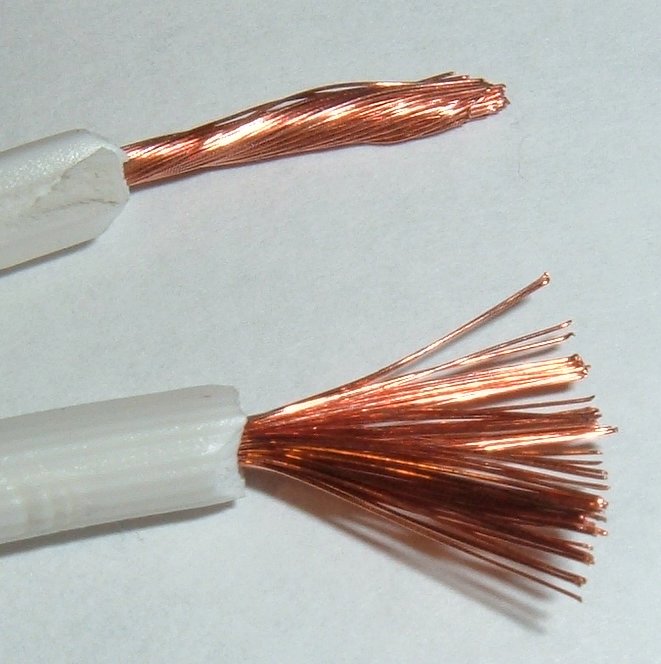
Wire can often be classified as either solid, stranded or braided depending on its construction. For electrical applications, wire is made of a conductive material, such as copper. The use of a conductive material allows electricity to flow through the wire. There’s solid, stranded and braided wire, however. While they may look the same, solid, stranded and braided wire each feature a different construction.
What Is Solid Wire?
Also known as single-strand wire, solid wire is constructed of a single and solid piece of metal material. Solid wire is typically made of copper or copper-clad aluminum. It still features a protective jacket, but it doesn’t have multiple strands of material. Rather, solid wire features a single, thick strand of copper or copper-clad aluminum within the jacket.
What Is Stranded Wire?
Stranded wire is constructed of multiple strands of metal material that are bundled together. It’s the most common type of wire on the market. Stranded wire features multiple conductor strands that are bundled together. The strands are essentially twisted around each other. Like with solid wire, stranded wire features a jacket that protects the enclosed strands.
What is Braided Wire?
Braided wire, on the other hand, refers to wire with a specific type of shielding. Braided wire has multiple wire strands that are braided together. Each of these strands is wrapped in insulation. The entire bundle is then wrapped in a layer of braided mesh material.
Differences Between Solid, Stranded and Braided Wire
Solid wire costs less to manufacture than most other types of wire, including stranded and braided. Solid wire is also resistant to corrosion. Because it’s constructed of a single and solid conductor, solid wire has less surface area that’s potentially exposed to the elements. Therefore, it’s naturally protected against corrosion.
Stranded wire is more flexible than solid wire. Bending a piece of solid wire may cause the conductor within it to break. Stranded wire is made of multiple, thinner conductor strands, so it’s able to bend without breaking. More importantly, perhaps, stranded wire offers a higher level of conductivity than solid wire.
Braided wire is durable. Like stranded wire, it’s able to bend without breaking. Braided wire, though, is also resistant to abrasion, heat, moisture and other environmental hazards. It’s constructed of multiple wire strands. These strands, however, are wrapped in insulation. Stranded wire doesn’t use insulation. Stranded wire only has a jacket, whereas braided wire has insulation, which is wrapped in a layer of braided mesh material.

